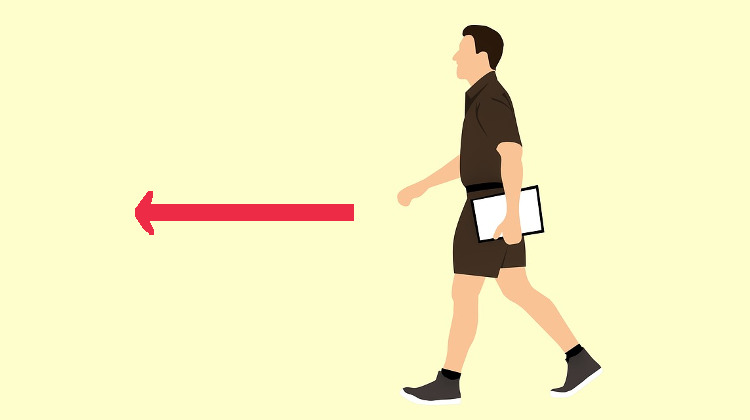Hello, everyone! Welcome to Learn English Fun Way!
So you can realise that in English, we say “welcome to” not “welcome for”. What are the reasons ? Those words ‘to’ and ‘for’ are so tiny; but when they’re used as prepositions in English sentences, it can get quite confusing! Surely, you’re been confused by these words at some point. So in this lesson, we will go over them in a little detail so that you can feel more confident using them while writing and speaking English.

How to learn the uses of “To” and “For” ?
Prepositions in general are pretty easy to confuse. For some of you, part of the problem is that with these prepositions, you’re thinking about the way that you use them in your own language, not how they’re used in English and it can be different. So part of the challenge when you’re learning is understanding how to use them separately in English and what the difference is, when to use one or the other. Moreover, some languages don’t really rely on prepositions much at all. Sometimes English prepositions don’t have a lot of logic to them. They don’t always make sense. And for all of these reasons, English prepositions must be learned and practised in context with other words.
Sometimes, using the wrong preposition doesn’t affect the meaning of your sentence too much. Native speakers will recognise the mistake, but they probably won’t correct you on it because they’ll still understand you. But with these two prepositions, they can often be used in place of each other and sometimes, the meaning completely changes. So we won’t focus too much on each individual preposition in this lesson. We’ll look at words that they’re often used with, which is often called “collocation” in English.
Therefore, in this lesson, we are going to talk about the uses of ‘to’. We are going to talk about the uses of ‘for’. And then we are going to talk about the times when you could use either ‘to’ or ‘for’. Now, let’s start!

How To Use To And For In English?
I) TO
The preposition “to” is used to mentioned about:
-
Direction / Destination
So, you can use ‘to’ when there is some kind of movement from one place to another. This doesn’t only relate to physical movement and action. It could also relate to other types of movement. We can use ‘to’ when there’s some kind of transfer happening or something is being moved from one place to another destination.
For example:
- Do you usually take the bus to work ?
- If you’re feeling sick, you should talk to a doctor.
- Can you quickly run to the shops?
- They invite us to their house for dinner.
If you’re talking about distance, you should also use ‘to’, since distance is the length or the time from one place to another – to a destination.
For example:
- It’s only 6 kilometers from my house to the office.
-
Time/ time between two points
When we’re talking about one point in time to another point in time, we can use “to”
For example:
- The supermarket is open from 9:00 to 7:00.
- I study English Monday to Thursday every week.
-
Preference
If there are two things and you’d like one of those things a little more than the other, you can say you prefer one thing to the other.
For example:
- I prefer chocolate ice cream to vanilla ice cream.
- I like chocolate ice cream more than vanilla.
- He prefers riding his bike to walking.
- He likes riding more than walking.
- Do you prefer tea to coffee?
- Do you like tea more than coffee.
-
Limit/ Endpoint
We can also use ‘to’ to talk about the limit or the endpoint of something – the point where something finishes or ends. It’s the limit that you can’t go past. So in this situation, talking about limits, you may also hear the phrasal verb ‘up to
For example:
- The water came up to my knees during the high season.

II) FOR
The preposition “for” is used to mentioned about:
-
Benefit
When we talk about benefits, the positive effects or results of something, we can use ‘for’.
For example:
- One of the benefits of eating ginger is that it helps your immune system.
- Ginger is great for your immune system.
-
Time
We also use ‘for’ to talk about time. We use it when we’re doing something over a period of time. So when something has happened for a number of hours, days, weeks, months, years, or we do something for a duration, a period of time, you use the preposition “for”.
- They’ve been living in the city for 2 years
- How long have you been studying medicine for ?
- I’ve been waiting for 30 minutes, where are you?
Notice how all of those examples are using the perfect tense? So, remember, ‘for’ is often used when talking about time in the perfect tense.
-
Helping someone
If you do something to help someone out or do something nice, then you are doing something for them.
- I baked a cake for my sister
- I need to collect the mail for my grandma
- Hey can you grab those boxex for me?
-
Function / Use
What’s this thing’s purpose? What’s its function? What’s it used for?
Remember that we use ‘for’ when we’re talking about a function or a use. We use the form ‘for’ plus verb –ing.
- It’s used for drinking.
- Yeast is an ingredient used for baking bread.
- That camera is used for taking pictures under water.
So notice how the verb -ing form is always following ‘for’.

III) “TO” AND “FOR”
All of those above-mentioned situations are ones where you can use ‘to’ or ‘for. There are some other uses as well but they are definitely the most common ones. Now, another very common use for these prepositions is one where both of ‘to’ and ‘for’ can be used, which is where things get a little trickier.
So, both ‘to’and ‘for’ are used when we talk about:
-
Reason / Motive
You can use both ‘to’ and ‘for’ to talk about a reason or a motive. That is to talk about why someone is doing something, for what reason are they doing it? But in this case, they are not interchangeable. You can’t use either one in the same way but there are some simple rules to remember that will help you to use them correctly.
Use ‘to’ when the motive or the reason is a verb and use ‘for’ when the motive or a reason is a noun.
For example:
- Why is he studying English ?
- He’s studying English to apply for a job
- He’s studying for work
In this case, ‘apply’ is a verb so we use ‘to’ and ‘work’ is a noun so we use ‘for’.
-
Bring something
- My assistant brought lunch to me
‘To’ is used to talk about destination or direction, where there’s movement involved. So in this example, ‘lunch’ is coming to me. I’m the destination for lunch. My assistant physically carried the lunch and delivered it to me.
- My boss brought lunch for me
‘For’ is used to do something nice for someone, or to help someone with something. My boss brought it to me because he wanted to do something nice for me.
Both of those sentences are grammatically correct but using ‘for’ or ‘to’ changes the meaning.
-
Make a phone call
- I made a quick phone call to my Mum
Preposition ‘to’ in this sentence helps us to understand the direction of the action, the destination of my phone call. I called and my mum received my phone call.
- I made a quick phone call for my Mum
In this case, it means I’m helping her. I’m making a call to someone else because maybe my mum couldn’t call them or maybe she didn’t want to for some reason so I called that person for her to help her.
-
Apologise
With this verb, ‘apologise’, both prepositions can be used but with different results. We can apologise for something, or doing something. Or we can apologise to someone, which is the person receiving the apology.
- He’s calling to apologise for missing the meeting yesterday!
- He should apologise to his boss for missing the meeting yesterday
- Travel
We use ‘travel to’ somewhere but we also can use ‘travel for’ when we’re talking about a purpose or even a time.
- I’m travelling for three weeks
- I’m travelling for work
-
Apply
You apply for something, maybe a job or a position, but we can also apply to a person.
- I’m applying for a schorlarship.
- I’m applying for a new job.
- I’m applying to his company.
-
Ask
We use ‘ask somebody to do something or ‘ask for something’.
- I’m asking for a new backpack for my birthday
- Ask for help if you don’t understand
- Ask me to help you if you don’t understand
-
Wait
We use ‘wait for’ something or someone, but we can also ‘wait to do something’. So ‘wait for’ is followed by a noun and ‘wait to’ is followed by a verb.
- Can you wait for me for 30 minutes ?
- Hurry up! We’re waiting to go.

There’s a bunch of different situations where you can use ‘to’ and ‘for’, but really, trying to memorise all of those situations is a pretty difficult way to learn them. There are just too many and it becomes really difficult and confusing to try and remember them all. Therefore, learning common collocations is going to be really useful for you. It’s best to learn prepositions with the verb or the noun that they’re commonly used with.
The above-mentioned collocations are really common in English communication; hence, you should learn and remember all of them. They occur all the time, then you’ll be so much closer to using the prepositions ‘to’ and ‘for’ like a total pro! To get further explanation as practice your listening English, you should watch the video below. Thank you for reading and see you in the next writing!
Credit: Youtube Channel “mmmEnglish”




